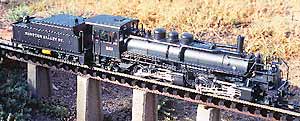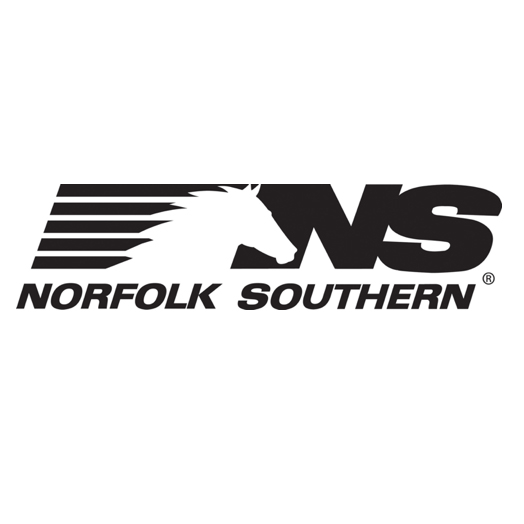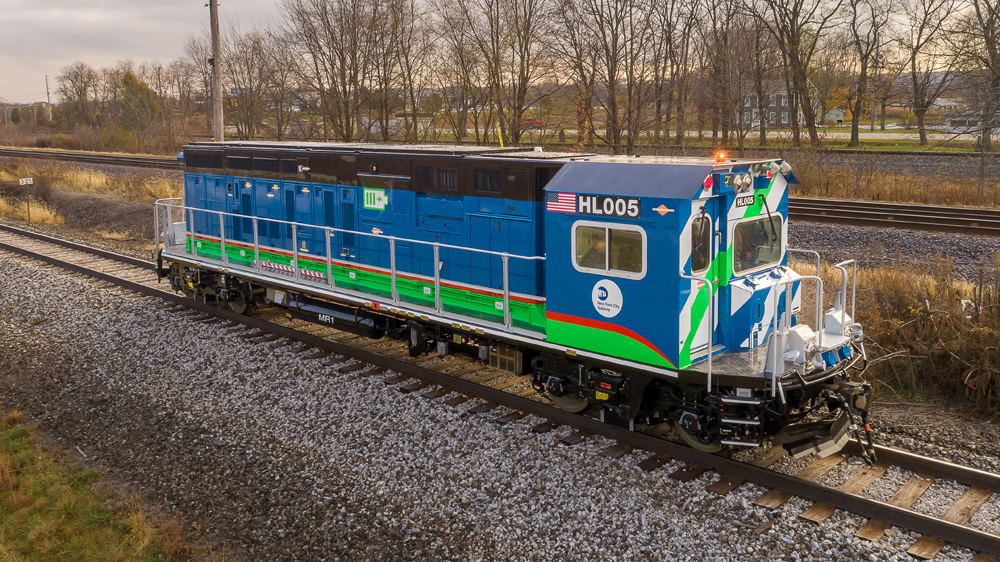1:22.5 scale, gauge-1 Sumpter Valley 2-6-6-2
LGB of America, Inc.
6444 Nancy Ridge Drive
San Diego, CA 92121
www.lgb.com
See your LGB dealer for price and availability
Articulated locomotive with tender; plastic and metal construction; 0-24 volts DC operation; two weather-resistant motor blocks with seven-pole Bühler motors; 12 powered wheels with power pickup on all 12 wheels; two traction tires; five-volt stabilization system; smoke generator; lighted cab interior and directional front and rear lamps; flickering red light in firebox; digital electronic sound system; can be equipped with optional Multi-Train System; weighs nearly 12 pounds; 37″ in length–in 1:22.5 scale, 69’4″. Current draw, 2 amps at 24V at full slip; tractive effort 42.5 ounces, enough to pull around 34 standard eight-wheel freight cars
Pros Imposing presence on the garden railway setting; accurately represents the appearance of the prototype; excellent digital sound system; responds smoothly and positively to the throttle with outstanding slow-running characteristics; able to pull a substantial consist; correct US grade-crossing whistle; excellent craftsmanship and materials; equipped with LGB’s new “flat” electrical connector/sockets
Cons Proportions of some details not to scale; dummy (non-functional) coupler on pilot; sound system uses only two “chuffs” per driver revolution instead of four; inaccurate scale/gauge combination
Modeled after units that operated on Oregon’s narrow-gauge SVRy, this locomotive is a modification of LGB’s Uintah Railway Co. 2-6-6-2 (#20882). The prototype No 251 was also a modified Uintah engine. After the Uintah ceased operations in the late 1930s, their locomotives (Nos 50 and 51) were sold to the SVRy. On the Sumpter Valley, the units were stripped of their side tanks and bunkers, converted to oil-burners, and equipped with tenders from a pair of Mikados that had been sold. The rebuilt locomotives (renumbered SVRy 250 and 251) worked in Oregon until 1947. With the demise of the Sumpter Valley Railway, they were sold to a scrapper who then resold them to the International Railway of Central America for service in Guatemala, where they ran until the early 1970s, when they were finally scrapped.
Modelers familiar with the LGB Uintah “Mallets” (an incorrect term, since the prototypes were not compounds) will note that, in addition to the absent side tanks and fuel bunkers, the SVRy articulated sports a compound air pump on the front of the smokebox, new pilot handrails, and a new cab. The modified locomotive pulls the former Mikado tender equipped with an oil tank, mounted on equalizing archbar trucks.
The locomotive is assembled mostly from plastic moldings, with metal tires, wheels, grab irons, and some pipes. Silver trim is painted around the cab’s windows, and the bell, whistle, and pop valves are made of gold-finished plastic. The tender and locomotive are appropriately and sharply finished with white graphics.
The digital electronic sound unit is excellent, offering a full array of features, including chuffs, bell, whistle, air pump, and injector. A volume control is conveniently located inside the cover of the rear steam dome. Sounds can be triggered by magnets or through the optional Multi-Train System’s mouse. With a bit of practice, the operator can elicit a realistic squeal during braking. In operation, the sound system works well and adds to the overall effect of the locomotive’s massive presence.
The tender seems to be a reasonably accurate representation of a Mikado-style tender. It is well detailed, with poling pockets, rivets, steel frame, and brake cylinder all represented. Although I didn’t perform surgery on our review sample, it appears that the tender is empty and could be used for hauling batteries and radio-control gear if desired. The tender connects electrically to the locomotive with one of LGB’s new flat-plugged electrical cables. A receptacle on the rear of the tender tank is concealed with a prototypical-looking cover.
I operated the review sample for several hours on my garden railway and found that it was highly responsive to the control, running smoothly at all speeds through grades up to 4 percent. It backed through my LGB #1600-series switches without incident. It was quite handsome as it made its way through my line’s forest of dwarf Alberta spruce trees, across a couple of high timber trestles, and through the rocky canyons. I recommend the LGB SVRy Mallet without reservation.














